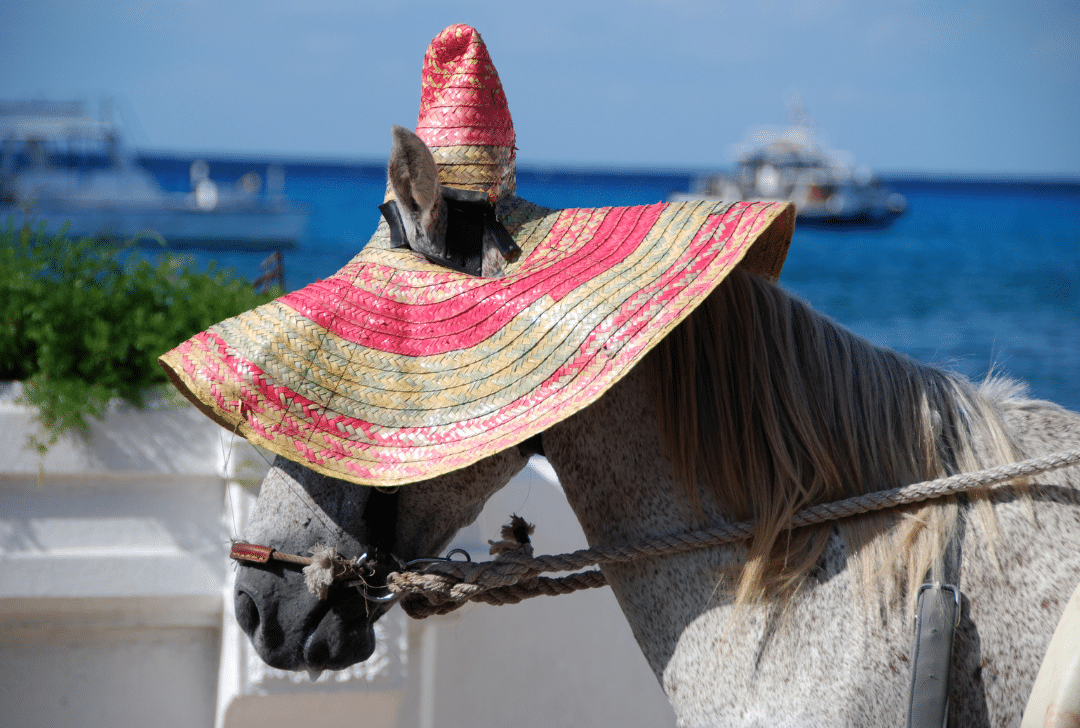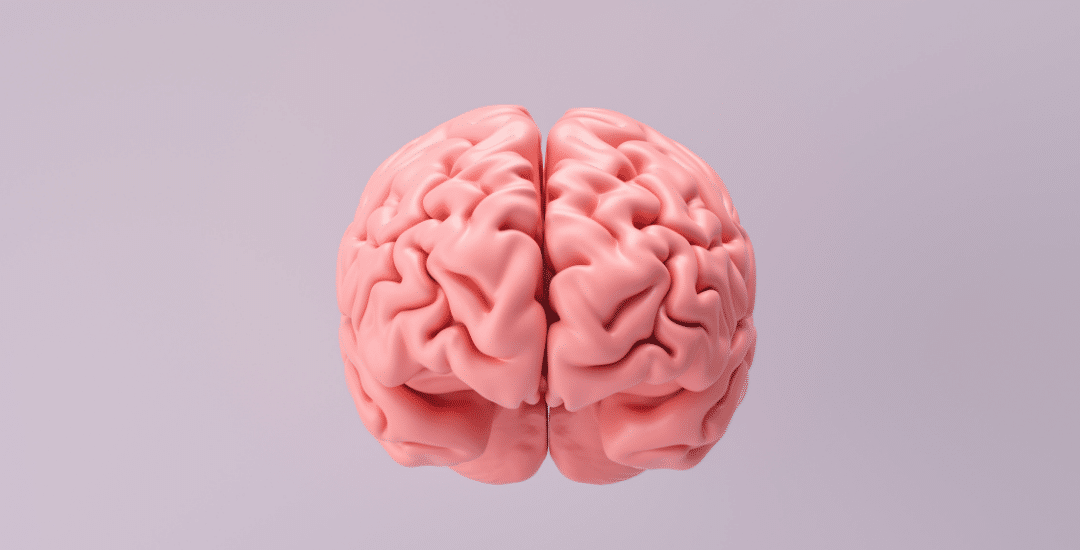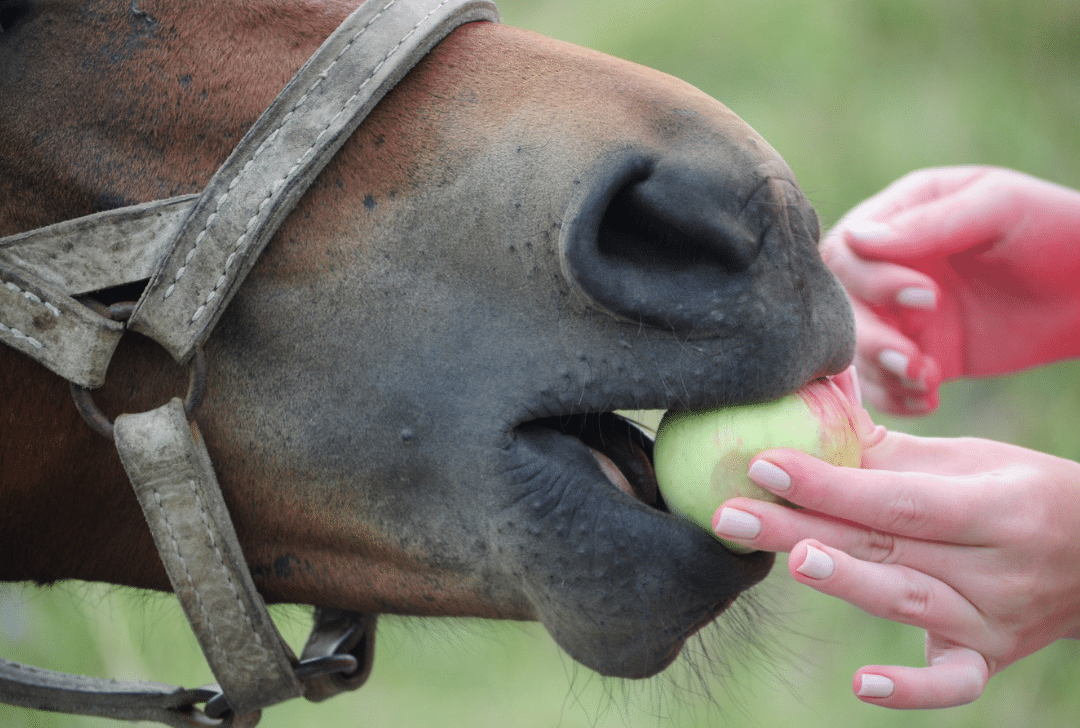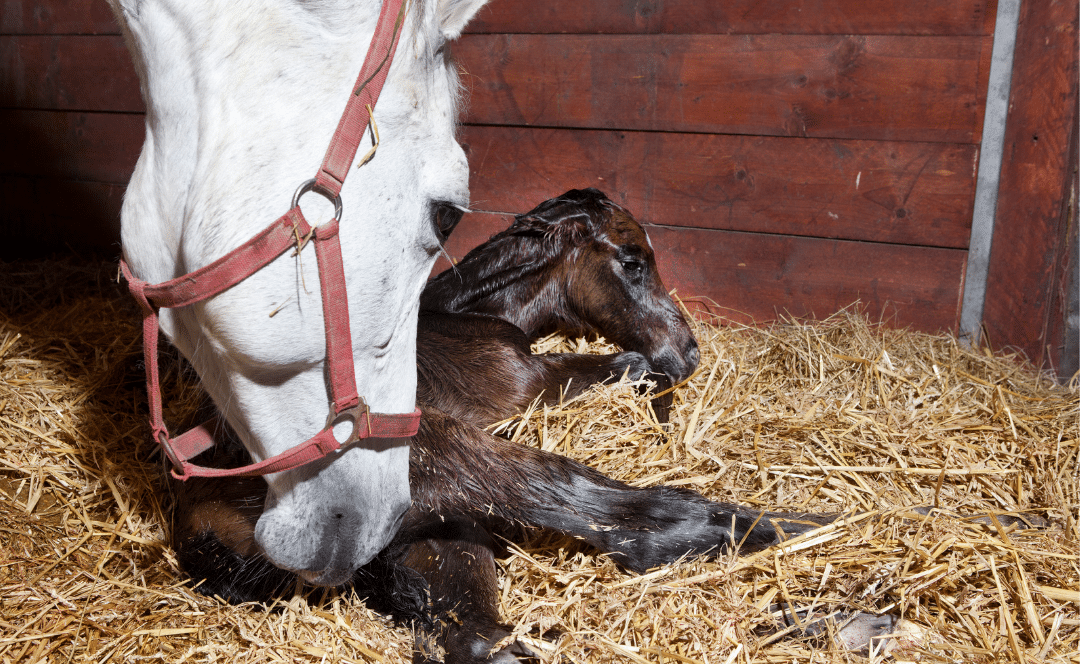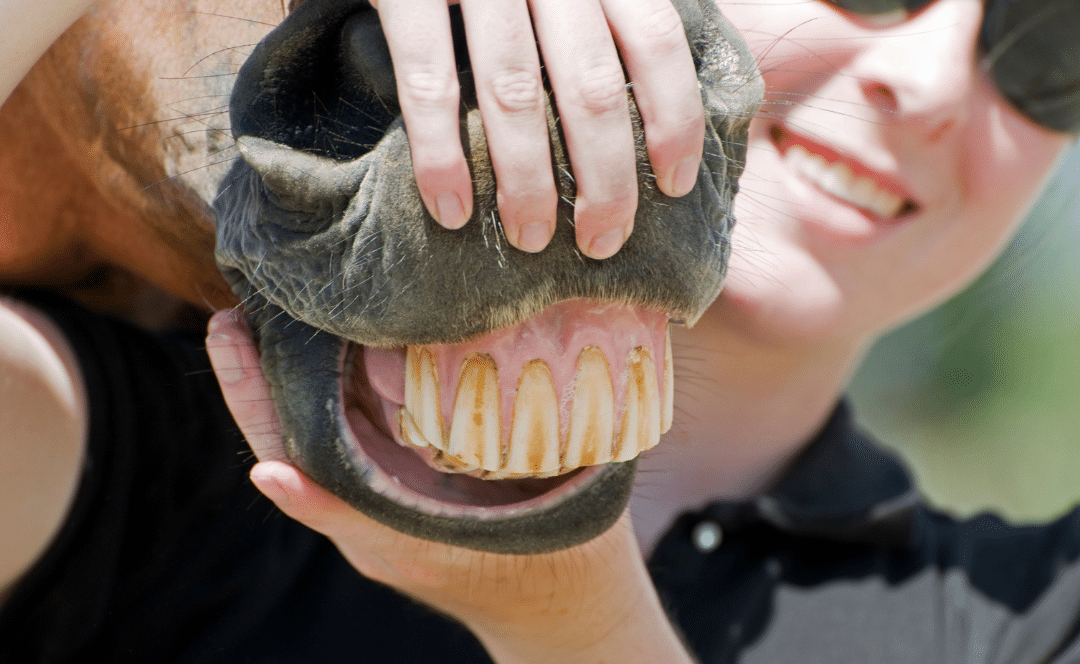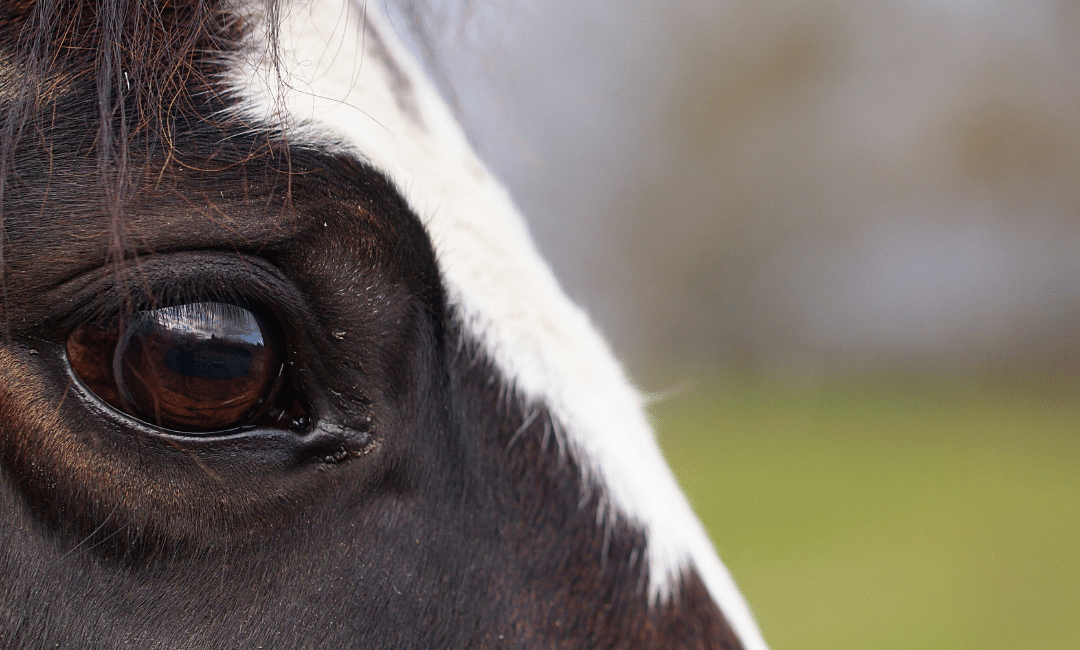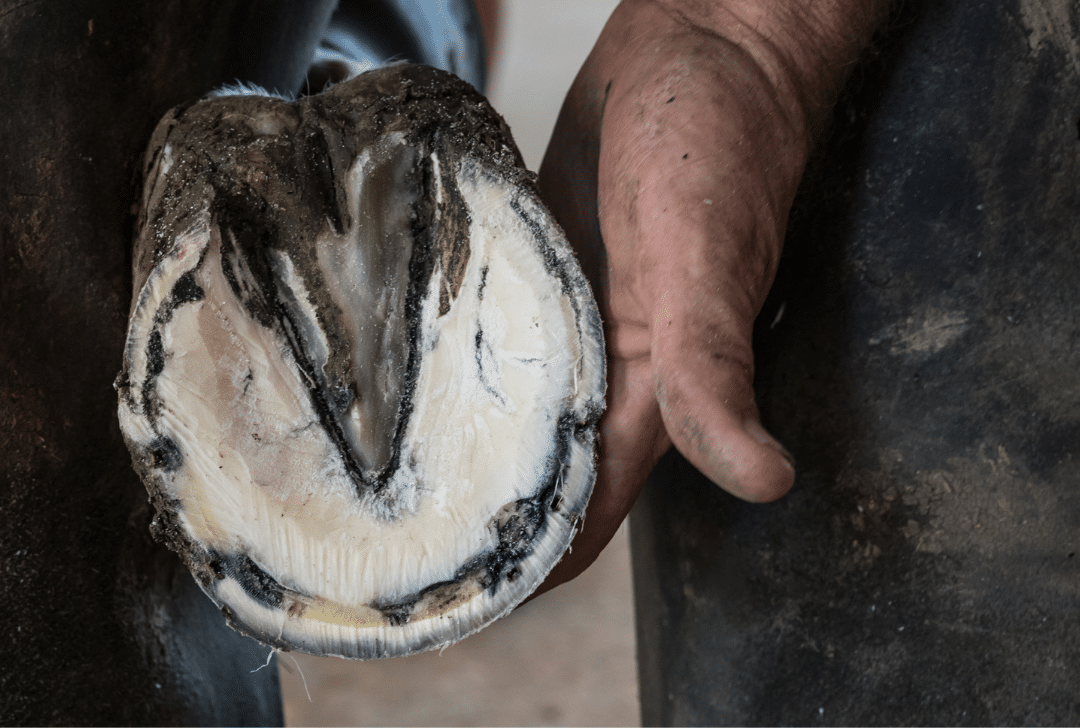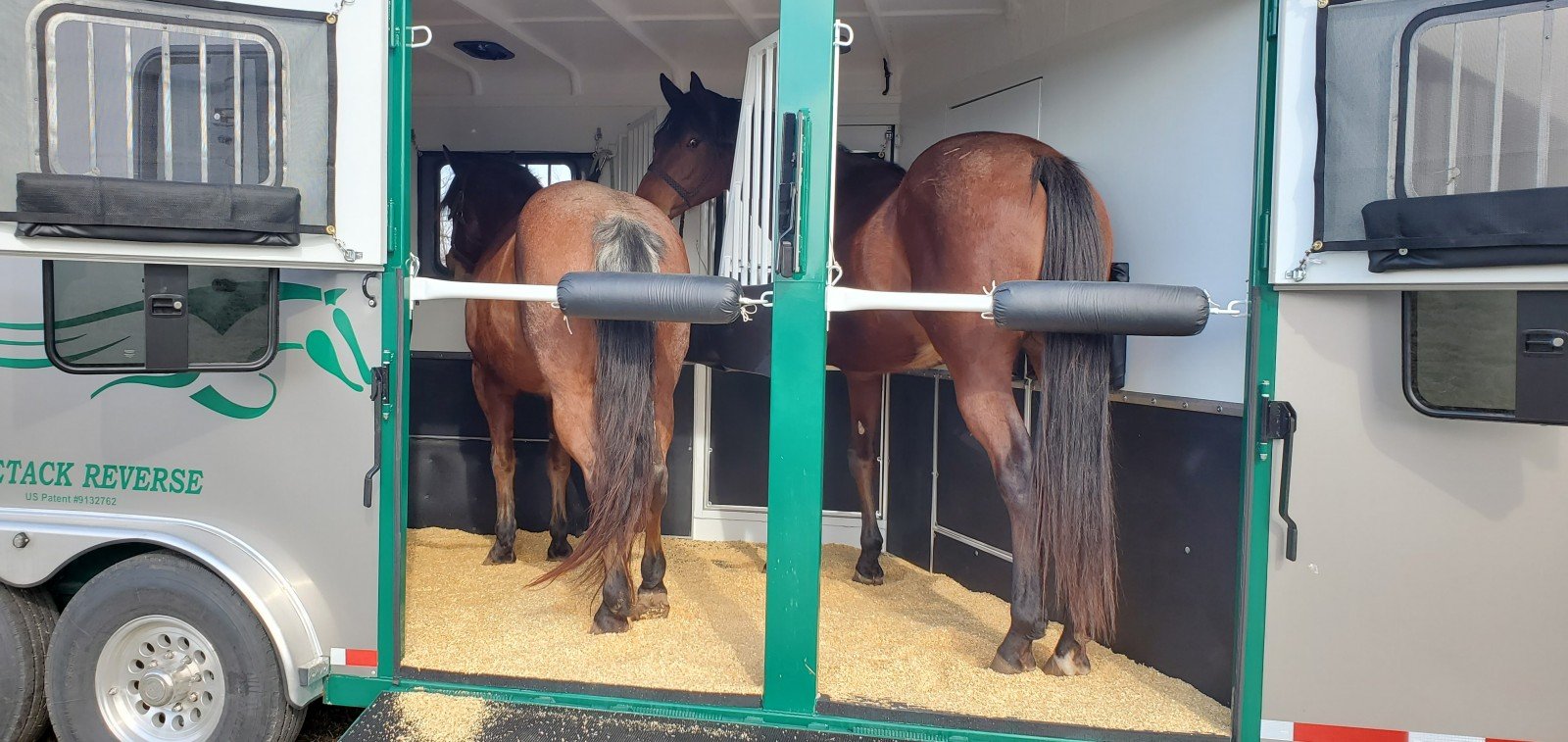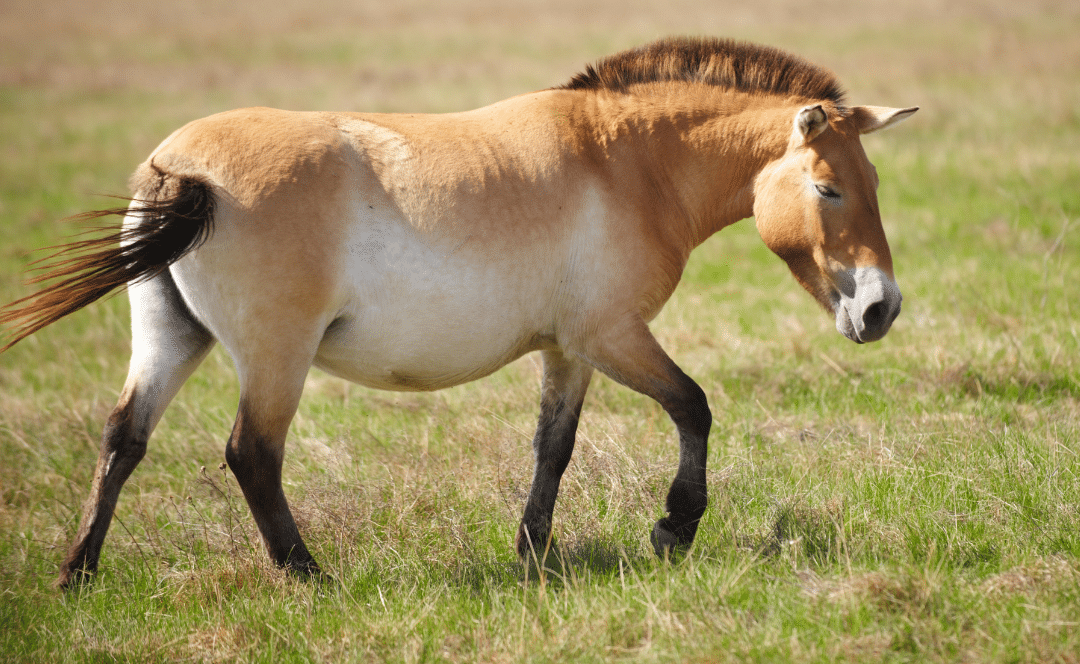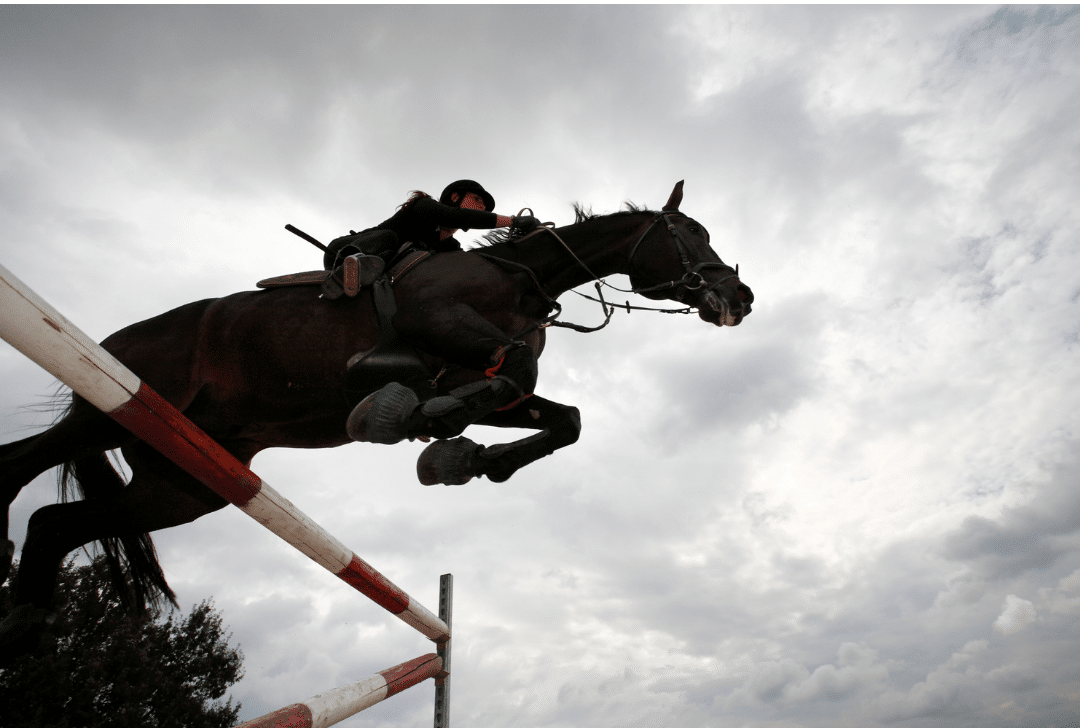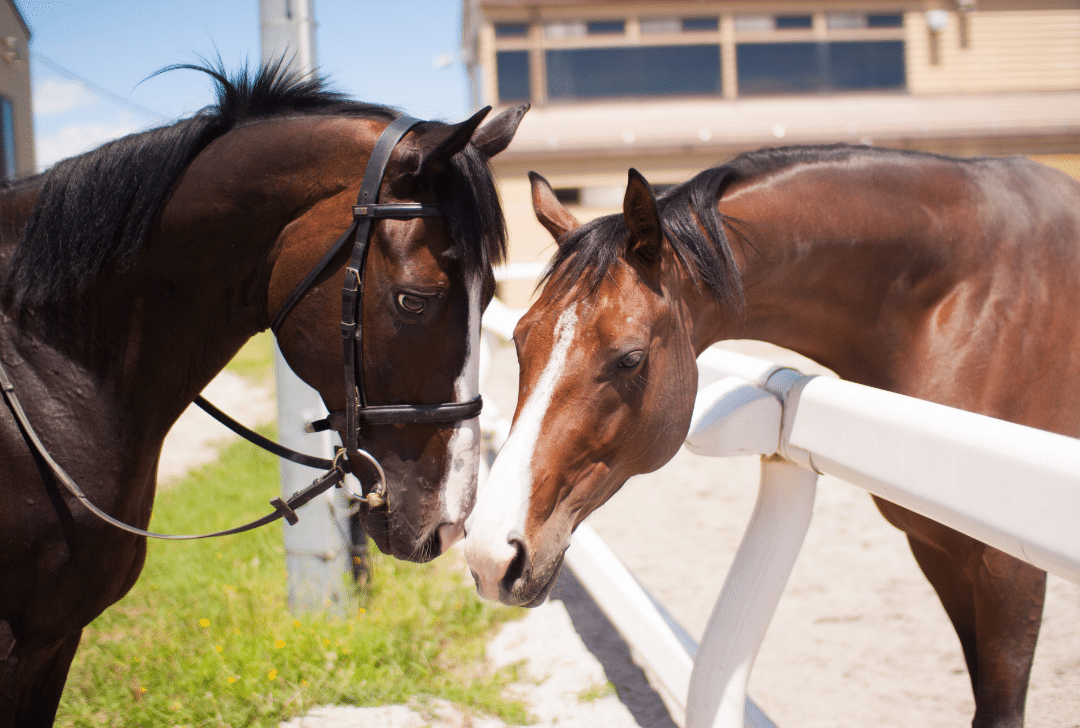53 Random Horse Facts: Weird, Cool, and Funny!
Horses are truly magnificent animals that have captured the hearts of people all around the world. For horse lovers, learning random horse facts is just another way to stir our enthusiasm and love for these creatures. Here are the top 53 random horse facts that our team at Double D Trailers gathered.
Skip ahead to:
Weird Horse Facts
1. Horses cannot burp or vomit.
They have a very strong muscle ring called the cardiac sphincter at the entrance to their stomachs. This structure makes sure any food that enters the stomach cannot exit. Vomiting is a protection system; it rids the stomach of possible food-related intolerances, such as poisons, bacteria, and viral infections. It is thought then that this inability in horses to vomit has another purpose. When horses run, their intestines hammer on their stomach, causing pressure to build up. If their sphincter valve opened under pressure, horses would vomit every time they ran. In the wild, where horses are prey, if the horse vomited, eventually, the predator would catch its prey. (Sources: The Equinest and horseracingsense.com)
2. Horses with pink skin can get a sunburn. (Source: The Equinest)
Make sure to invest in protective sun gear for your horses on those blazing summer days.
3. It takes 9-12 months to re-grow an entire horse hoof.
Horse’s hooves normally grow at a rate of ¼ inch to ½ inch per month. However, this can vary throughout the year but are known to grow faster during the summer months. (Source: The Equinest)
4. You can tell if a horse is cold by feeling behind their ears.
If that area is cold, so is the horse. (Source: The Chronicle of the Horse)
5. When horses look like they’re laughing, they’re engaging in a special nose-enhancing technique known as “flehmen”.
The horse extends its neck, raises its head, and inhales as it rolls its upper lip back, displaying its front teeth. This activity helps determine whether a smell is good or bad (to the horse of course!). (Source: Dictionary)
6. A horse's teeth take up more space in their head than their brain. (Source: LiveScience).
7. An adult horse’s brain weighs 22 oz.
Bonus: A fun horse fact for kids - this is about half that of a human. (Source: The Equinest)
8. Horses can sleep both lying down and standing up.
Horses have a unique survival adaptation called the stay apparatus that allows them to completely relax and sleep standing up. The point of this is to enable horses to run at the first sign of danger. However, they still need to lie down for short periods of time to achieve deep (REM) sleep and complete their sleep cycle. Horses can’t lie down for too long as that would put undue strain on their bones and internal organs. (Source: ScienceKids)
9. Horses in a herd (especially wild horses) will not lie down simultaneously.
The reason is that because at least one will act as a look-out - or sentry - to alert its companions of potential dangers, thereby greatly increasing their chances for survival. (Source: EquiSearch)
10. Vocalizations are highly important to horses.
Whinnying and neighing sounds are elicited when horses meet or leave each other. Stallions (adult male horses) perform loud roars as mating calls, and all horses will use snorts to alert others of potential danger. (Source: Onekind)
11. The first cloned horse was a Haflinger mare in Italy in 2003.
Her name was Prometea (Source: The Equinest)
12. Horses produce approximately 10 gallons of saliva a day.
This is roughly 40 times the amount humans produce. To make this much saliva, horses use 5-10 gallons (22.7-40 liters) of water a day. (Source: EquiNews and horseyhooves.com)
13. Most of the time, wherever a horse's ear is pointing is where the horse is looking with the eye on the same side.
If the ears are pointing in different directions, the horse is looking at two different things at the same time. (Source: Training Horses Naturally)
14. Horses with typical anatomy are “obligate nasal breathers” which means they must breathe through their nostrils and cannot breathe through their mouths.
The reason for this is the position of their epiglottis, which forms an airtight seal with the soft palate. (Source: The Horse and horseyhooves.com)
Funny Horse Facts
15. Horses have a sense of humor.
A fun horse fact is that horses are just that - funny! According to Dr. Sarah Ralston, VMD, PhD, DACVN, horses exhibit many “playful” behaviors throughout their life such as playing tag, mock fights, or nipping. (Source: Horse Illustrated)
16. Horses use their ears, eyes, and nostrils to express their mood.
They also communicate their feelings through facial expressions. They can also understand human expressions and remember a person’s previous emotional state, adapting their behavior accordingly. This ability comes naturally to horses as they have complex facial expressions themselves. (Source: CBS News and horseyhooves.com)
17. Most horses have 205 bones in their bodies, while humans have 206.
While we both have a pelvis, only humans have collar bones. In humans, collar bones attach the arms to the skeleton and stabilize the shoulders. However, in horses this function is performed by the thoracic sling instead. The thoracic sling is a group of muscles, tendons, and ligaments that attach the forelimbs to the rest of the body. This is so they can run at a faster speed. Having a collarbone would restrict the horse’s reach and stride length, making them much slower runners. The horse and human skeletons are quite similar, even though we stand in completely different orientations. However, Arabian horses have one less pair of ribs, lumbar and tail vertebrae, meaning they only have 201 bones. (Source: eclectic-horseman.com and horseyhooves.com).
18. Horses like sweet flavors and will usually reject anything sour or bitter. (Source: The Equinest)
This is a really fun fact about horses, because it involves snacking! What's your horse's snack of choice?
19. Most horses are born at night.
You might think you’ve got time for a cup of coffee while you’re waiting for the birth, but you’d best keep an eye on the mother in labor. In the wild, a rapid night birth helps to protect a mare and foal from predators when they are at their most vulnerable.
20. The fastest recorded sprinting speed of a horse was 88 kph (55 mph).
This incredible speed was achieved in 2005 by a racing quarter horse called A Long Goodbye on a quarter-mile distance (0.40 km). The horse completed the race in exactly 20.686 seconds, running parts at over 50 mph. Most horses however gallop at around 44 kph or 27 mph. (Source: Purely Facts and horseyhooves.com)
Cool Horse Facts
21. Newborn horses can stand, walk, and trot shortly after birth.
Ideally, a foal should be up and nursing within two hours of birth. Horses can run within 24 hours after birth. (Source: ScienceKids and thesprucepets.com)
22. The gestation period of a foal is two months longer than a human.
It takes approximately 11 months for a foal to fully develop. Some foals can be a few weeks late or a few weeks early. Most breeders try to time foaling for early spring, so the foal can grow and exercise throughout the summer months. (Source: www.thesprucepets.com)
23. You can generally tell the difference between male and female horses by their number of teeth.
Males have 40 while females have 36 (but honestly, most of us are going to use the much “easier” way). But they do not have any teeth in the middle of their mouths.
24. Horses have very large eyes.
In fact, they are among the largest eyes of all land-based mammals. In comparison to ours, horses’ eyes are eight times bigger! A horse’s eye is about 1.5 inches (4 cm) deep—essentially the width of a playing card. An injury affecting any part of its structure can create significant pain and severely affect the horse’s vision. (Source thehorse.com)
25. Compared to other animals, horses have good vision.
Humans with perfect vision are often described as having “20/20” vision. Horses are thought to be somewhere in the range of 20/30 to 20/60 – meaning that they can see from 20 feet away what an average human can see from 30-60 feet away. (By contrast, cats are thought to have 20/100 vision.) (Source: news.vet.tufts.edu)
26. Because of the position of the horse’s eyes, they can see roughly 350 degrees around themselves.
This is nearly four times our visual range! However, horses see the world very differently from us. They can only see 55 to 65 degrees with both eyes; the rest of their vision (190-230 degrees) is monocular. This means that their depth perception and ability to see details are quite poor. On the other hand, horses are exceptionally good at detecting motion, which is how they survived for millions of years. As soon as a predator came into their visual range, they were able to run instantly. But because they can’t make out moving shapes in their peripheral vision clearly, horses will spook at just about any sudden movement. (Source: ScienceKids and horseyhooves.com).
27. Horses still hold a place of honor in many cultures, often linked to heroic exploits in war.
China is one of those countries. (Source: National Geographic)
28. A horse can see better at night than a human.
However, a horse's eyes take longer to adjust from light to dark and from dark to light than a human. (Source: Cowboy Way)
29. On the underside of a horse's hoof is a triangular shaped area called the “frog," which has multiple functions.
It acts as a shock absorber for a horse's leg, absorbing the shock and distributing it to the internal digital cushion, a spongy structure under the horse’s heels. It also helps to pump venous blood back up the leg and is quite often called the horse’s “second heart”. (Sources: PawNation and horseyhooves.com)
30. The average horse's heart weighs approximately 9 or 10 pounds whereas a human heart weighs only 10-12 ounces (0.28-0.34 kg) on average.
Racehorses have even bigger hearts, and heart size was the key to the success of many racing legends. For example, Secretariat’s heart weighed an astonishing 21 to 22 pounds (9.5-10 kg), while Phar Lap’s heart was 14 pounds (6.35 kg). Research has shown that a horse’s heart weighs around 1% of his body weight. (Source: Steinbeck Equine and horseyhooves.com)
31. Scientists believe that the first known ancestor of the horse lived about 50 million years ago.
This prehistoric horse is called Eohippus and had four padded toes on the front legs and three padded toes on the back legs. (Source: Chronozoom)
32. Horses have 16 muscles in each ear.
This allows them to rotate their ears 180 degrees. (Source: University of Minnesota)
33. Horses remember a lot.
You may have heard that elephants have an extremely superior memory. Did you know that horses are considered second in rank when it comes to memory in animals after elephants? Horses have great memories! (Source: University of Missouri)
Just Plain Random Horse Facts
34. At one time, people thought horses were colorblind.
They’re not, though they are better at seeing yellows and greens than purples and violets. (Source: The Horse)
35. Horse hooves are made from the same protein – called keratin - that comprises human hair and fingernails.
Because they’re constantly growing, it is very important that your horse’s hooves get a regular trim. This is especially important with young horses, as neglected hooves in young horses can result in crooked legs, and an uncertain future. (Source: horseyhooves.com)
36. The most expensive horse ever sold* was Fusaichi Pegasus. He was purchased for a staggering $70 million in 2000 by Coolmore Stud in Ireland.
This fee was paid in expectation that he would produce race-winning offspring and become a money-spinner in the horse breeding industry. (*This is still true in 2022). Unfortunately, this did not happen, although he did sire three Grade 1 stakes winners and was the grandsire of Belmont Stakes winner Ruler on Ice. (Source: horseyhooves.com and others)
37. The horse trailer (“horse box”) was invented by Lord George Bentinck, a U.K. man who needed a more effective transport for getting his prize horse “Elis” from one racetrack to another.
He knew that if he made his horse walk the distances between racetracks, he would never be able to successfully win a race.
38. In 1872, Leland Stanford (1824-1893) made a bet that at some point in the gallop, all four of a horse’s legs were off the ground at the same time.
Eadweard Muybridge (1830-1904) proved him right by using a series of 24 cameras photographing a racehorse named Sallie Gardner. (Source: HorseswithAmie)
39. Horses are more secure and comfortable when traveling in a horse trailer if they can face the rear, but they prefer openings.
Dr Natalie K. Waran at the University of Edinburgh studied the effects of transporting horses facing either forwards or backwards on their behaviour and heart rate, which was published in the Veterinary Record in 1996. “The most indicative finding is that the average heart-rate was significantly lower when horses travelled facing backwards,” says Michelle. “They move around less, vocalize less, and tend to hold their heads in a lower, more normal position. In this position, there is less pressure on the fragile head and chest.” (Source: Animal People News and horseandhound.co.uk)
40. A nineteenth-century horse named ‘Old Billy’ reportedly lived 62 years (1760-1822) in England.
His exact breed is not known, although he was most likely a Shire-type horse with a brown coat and a white blaze. Curiously, his head was preserved and is currently on display at the Cecil Higgins Art Gallery and Bedford Museums. (Source: Manchester Museum)
41. It is thought that the Przewalski horse is the only truly wild horse species still in existence.
There are however numerous populations across the world of feral horses e.g., mustangs in North America, but these horses are descendants of domestic horses. All Przewalski’s horses today can be traced back to just 15 individuals captured from the wild a century ago. Named after the Russian explorer who discovered them in the nineteenth century, the breed was saved from extinction and recently reintroduced to their homeland in Mongolia. (Source: Onekind and horseyhooves.com)
42. Approximately 4.6 million Americans work in the horse industry in one way or another.
The total economic impact of the horse industry in the United States is $122 billion, creating 1.7 million jobs. (Source: University of Minnesota)
43. There are approximately 58 to 60 million horses in the world.
And, the vast majority are cared for by humans. (Source: horsetalk.co.nz)
44. There is only one species of domestic horse, but around 600 different breeds that specialize in everything from pulling wagons to racing.
According to a 2017 genetic study, all modern horses descend from two ancient horse breeds: the Arabian and Turkoman horses. All horses are grazers. (Source: National Geographic and horseyhooves.com)
45. All existing horse breeds fit into five categories: hot-blooded, warm-blooded, cold-blooded/draft, pony, and miniature.
Hot-blooded horses include the Arabian, Thoroughbred, and Barb breeds with origins in the Middle East. In contrast, cold-blooded (heavy) horses and ponies developed in northern Europe. A warm blood horse refers to any breed whose ancestors were crosses between hot-blooded and cold-blooded/pony type breeds. Finally, miniature horse breeds are scaled-down versions of their big cousins with a specified maximum height. (Source: horseyhooves.com)
46. Wild horses generally gather in groups of 3 to 20 animals.
A stallion (mature male) leads the group, which consists of mares (females) and young foals. When young males become colts, at around two years of age, the stallion drives them away. The colts then roam with other young males until they can gather their own band of females. (Source: National Geographic)
47. A horse’s height is measured in units known as "hands."
One hand is equal to four inches. The tallest horse on record was a Shire named Sampson. He was 21.2 hands (7 feet, 2 inches) tall. He was born in 1846 in Toddington Mills, England. (Source: Cowboy Way)
48. The record for the longest jump over water is held by a horse named Something who jumped 27 feet, 6 and 3/4 inches on April 25, 1975, in Johannesburg, South Africa.
He was ridden by Andre Ferreira. (Source: Equine Life Solutions)
49. The record for the highest jump made by a horse is held by a horse named Huaso who jumped 8 feet, 1 and 1/4 inches on February 5th, 1949, in Vina del Mar, Chile.
He was ridden by Captain Alberto Larraguibel. (Source: YouTube)
50. Horses drink at least 25 gallons of water a day on average.
And, this number is even more in hotter climates! (Source: Healthy Pets)
51. A zebroid is a cross between a zebra and any other member of the family Equidae (which, besides zebras, includes donkeys, ponies, and horses).
A "zonky" is a cross between a zebra and a donkey. … A "zony" is a cross between a zebra and a pony. … A "zorse" is a cross between a zebra and a horse. You get the drift. (Source: Cowboy Way)
52. If a horse has a red ribbon on its tail, it kicks.
So... stay clear! (Source: Equine Tips)
53. Horses are social animals and will get lonely if kept alone.
And, they will mourn the passing of a companion. (Source: The Equinest)
Like we said — weird, cool, and funny! — that’s these random horse facts in a nutshell. It’s also what makes the horse such a beautiful and noble creature.
It’s no wonder we here at Double D Horse Trailers are such big fans.
What are some of your favorite horse facts from our list? What are some facts about horses that we left off or you have never heard about? Let us know!
Other articles you may like...

